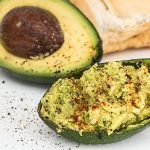Sugar: Can’t Quit? At Least Reduce It!
Sugar: Can’t Quit? At Least Reduce It!
by Joan Kent, PhD
The client’s food log was extreme. She tracked every bite she ate and calculated the calories in each item. She logged every workout and the calories she had burned. She was working out several times a day.
The most extreme feature of her food log was that it included almost nothing but sugar: pastries, chocolate, malted milk Whoppers, fat-free muffins. All day.
Her multiple health issues were fairly severe: irregular menstrual cycles, endometriosis, breast engorgement and tenderness, chronic fatigue, and quite a bit more. None had been diagnosed as linked with her diet.
Cutting Back on Sugar
My client didn’t feel ready to quit sugar, but was, in her words, “willing to cut back.”
I saw the drawbacks of that approach but was convinced her health issues were linked with the volume of sugar she was consuming all day long. Any improvement I could encourage would have been welcome.
Cutting back on sugar involves basics that everyone knows: Skip desserts. Avoid sodas. Don’t snack on cookies, candies or pastries. Don’t add sugar to coffee or tea. And so on.
But environment matters. Especially at home, where what you have – or don’t have – in your kitchen can make a huge difference. Knowing which foods to stop buying – and which ones to swap for them – is important.
The bad news is it requires Reading Labels.
What should you look for on those labels? Sugar can hide behind many names. Some are technically not sugar, but have virtually identical effects on insulin and brain chemistry. A few are simply different names for the same thing – cane sugar and sugar cane, for example.
First, Know Your Enemy
Here are the names of sugars I’m currently aware of – but the list keeps growing as new sugars are created.
Agave, Alcohol, Barley Malt, Beet Sugar, Brown Sugar, Cane Juice, Cane Sugar
Corn Sweetener, Corn Syrup, Date Sugar, Dextrose, Erythritol, Fructose
Fruit Juice Concentrate, Glucose, Glycerin, Glycerol, Granulated Sugar
High Fructose Corn Syrup, Honey, Hydrogenated Starch Hydrolysates (HSH)
Isomalt, Job’s Tears, Lactitol, Lactose, Lycasin, Malted Barley, Malt Extract
Maltitol, Maltitol Syrup, Maltodextrin, Mannitol, Maple Sugar, Maple Syrup,
Molasses, Polydextrose, Powdered Sugar, Raisin Juice, Raisin Syrup,
Raw Sugar, Rice Syrup, Sorbitol, Succanat, Sucralose, Sucrose, Sugar, Sugar Cane
Turbinado Sugar, Unrefined Sugar, Xylitol
Why Use This List?
The first time or two that you take this list to the store and shop with it, you might spend a little extra time reading labels.
After a couple of trips to the store, though, you’ll know what you can buy and what to skip. Then shopping will be just as easy as it is now — just healthier.
As for my Sugar Warrior client, she’s been reducing sugars for a while now. During her process, some of my fears were justified. Eating little bits of sugar made her crave more. That made it difficult to eliminate cravings, and she still battles them. She still wants desserts when she’s stressed and has to tell herself “no” each time. The “no” doesn’t always work.
But her health has improved. Her energy has increased. And that has provided enough motivation for her to decide to quit sugar altogether.
Nutrition geek that I am, that’s what I live for — helping my clients get results.
If you want to quit sugar and would like to “do it right” from the start, please visit www.LastResortNutrition.com and grab your free copy of “3 Biggest Mistakes People Make When Trying to Quit Sugar.”
Brought to you by Dr. Joan Kent, best-selling author of Stronger Than Sugar: 7 Simple Steps to Defeat Sugar Addiction, Lift Your Mood, and Transform Your Health.



